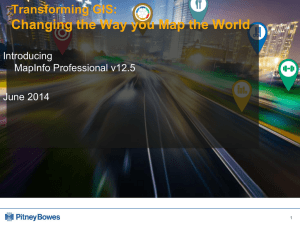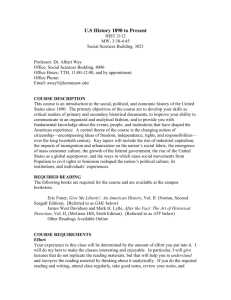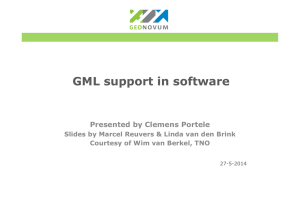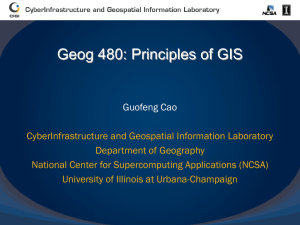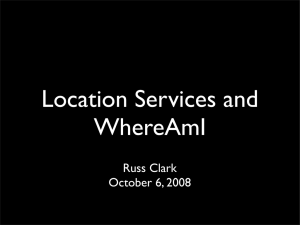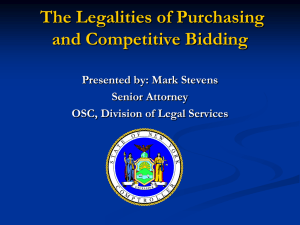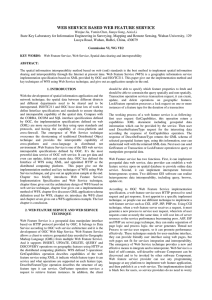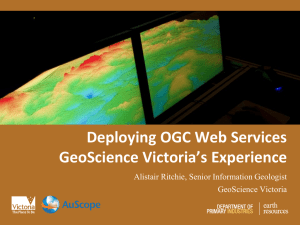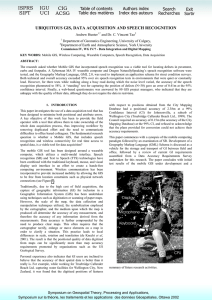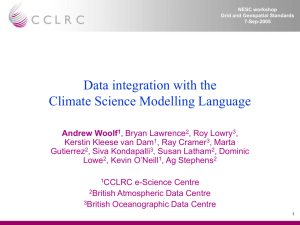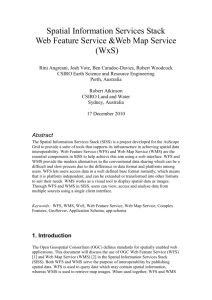Open Source GML
advertisement
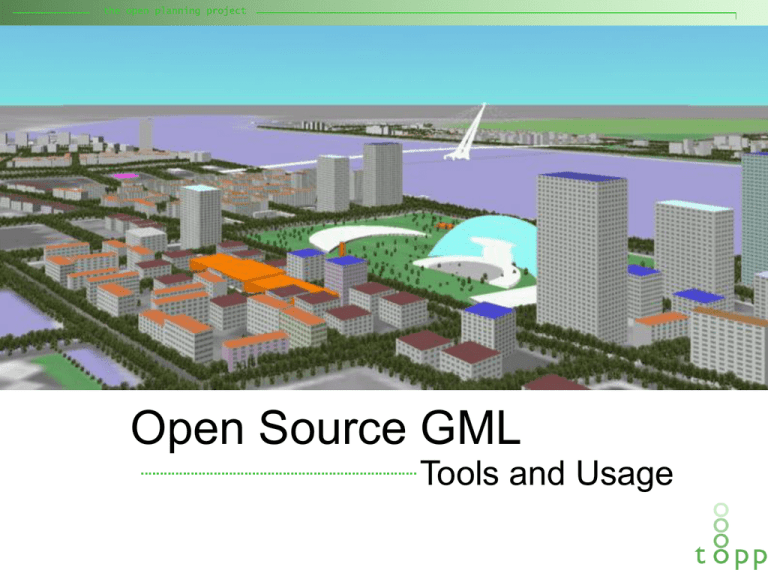
the open planning project Open Source GML Tools and Usage the open planning project Overview • Quick Background – Organizational biases, GML products • Existing Open Source Tools – Libraries – Generation – Consumption • Unresolved Issues • Conclusions – What should you use? the open planning project TOPP • Previously Vision for New York • Mission: – Develop open source digital earth tools – Demonstrate technology projects – Advocate for open, free geographic information • Software Products – GeoServer (Geographic Server) – Virtual Terrain Project (Visual Simulation Client) • GML is core to our products – Java bias the open planning project Product: GeoServer – J2EE – Full nontransactional WFS – Reads from PostGIS – Full transactional support the open planning project Product: Virtual Terrain – C++/OpenGL – Latest build has WFS import support for generic objects – Cultural objects transitioning to GML encodings – Working on full run-time WFS compatability the open planning project Open Source GML Libraries • Java – GML4J (Galdos) – GeoTools (Leeds/TOPP) – OpenMap (BBN) – Geobject? (Polexis) • C++ – OGR (Warnerdam) • Other Languages –? the open planning project Case Study: GML4j • Approach – DOM Parser (tree structure) – Tools to walk tree structure • Advantages – Most general parser • Disadvantages – Memory intensive and slow (DOM) – Thin feature framework the open planning project Case Study: GeoTools2 • Approach – SAX parser (event-based) – Directly transformed to internal feature model • Advantages – Fast and low-memory – Rich toolkit available • Disadvantages – Loose generality and flexibility with features – Toolkit somewhat immature the open planning project Open Source Generators • GeoServer – Known to have interoperated • Academic – UMN MapServ (planned) – Other academic projects • Nothing packaged • Commercial – Under a dozen the open planning project Open Source GML Viewers • Virtual Terrain Project (TOPP) – Beta support via OGR – All internal storage to GML • SVG Viewer – Javascript-based – Nedjo Rogers talk tommorrow • MapServer (UMN), GeoServer (TOPP) – WMS viewing support coming • Non-Productized Viewers – GeoTools, OpenMap the open planning project Open Issues • Base Issue – Dealing with the complexity of GML features • Overview – Feature Type Complexity – Internal Feature Types – Schema Proliferation – Projections the open planning project Issue: Feature Type Complexity • Issue – Structure and syntax complex – Post-GML, interoperability remains elusive • Proposals – ESRI’s Simple GML proposal – Warnerdam • Conclusions – Adhere to flat feature schemas the open planning project Issue: Internal Feature Types • Issue – Tightness of coupling – Tradeoff: power vs. flexibility • Approaches – Generic Models: GeoTools2 – Simple Models: OGR • Conclusions – Simple features will dominate toolkits the open planning project Issue: Schema Proliferation • Issue – Representation for common objects • Proposals – Information Communities (OGC) – SEDRIS (MITRE) • Conclusions – Still far away from results – Focus on common schema definitions – Toolkits unsure: GML, RDF the open planning project Issue: Projections • Issue – EPSG is standard – Limitations to EPSG database • Approaches – External WKT • Conclusions – Integrated XML encoding required – Coming in GML3 the open planning project Future Work: GeoTools2 • GML Parsing – Handle non-flat features – GML3 • GML Generation – Integration happening now the open planning project Future Work: GeoServer • GeoTools2 Integration (1 month) – Transactional WFS – Internal Filtering – Data Support • Shape, MIF, MySQL, CSV • SLD/WMS (2 months) • Other (ongoing) – GML3 – WCS – Data Formats • ArcSDE, Oracle 9i Spatial the open planning project Future Work: Virtual Terrain • Internal representation – Custom text to GML – Generic cultural object representations • Run-time WFS/WCS 3D support – Current imports in 2D functional – Fully interactive 3D scene browsing • Whole Earth Paging • Browser plug-in the open planning project Conclusions • Historical reluctance to develop tools – Underlying tech developing (XML, Schema) – Confusion over standard • GML Schema requirement • Some successes – Hesitation with coming of GML3 • Some tools now available – Parsers generally bound to toolkit the open planning project Conclusions • More tools will develop – Underlying technologies stabilizing – GML3 (hopefully) will solve • Waiting for the next big thing • Confusion over standards • When to use Open Source – Time to develop not critical – Cost is critical – Vendor independence critical the open planning project Conclusions • What to use? – GML4j, GeoTools2, OGR/GDAL – Commercial vendors • URLs – – – – – – TOPP: http://www.openplans.org GeoServer: http://geoserver.sourceforge.net Virtual Terrain: http://vterrain.org GeoTools: http://www.geotools.org OGR/GDAL: http://remotesensing.org PostGIS: http://postgis.refractions.net
